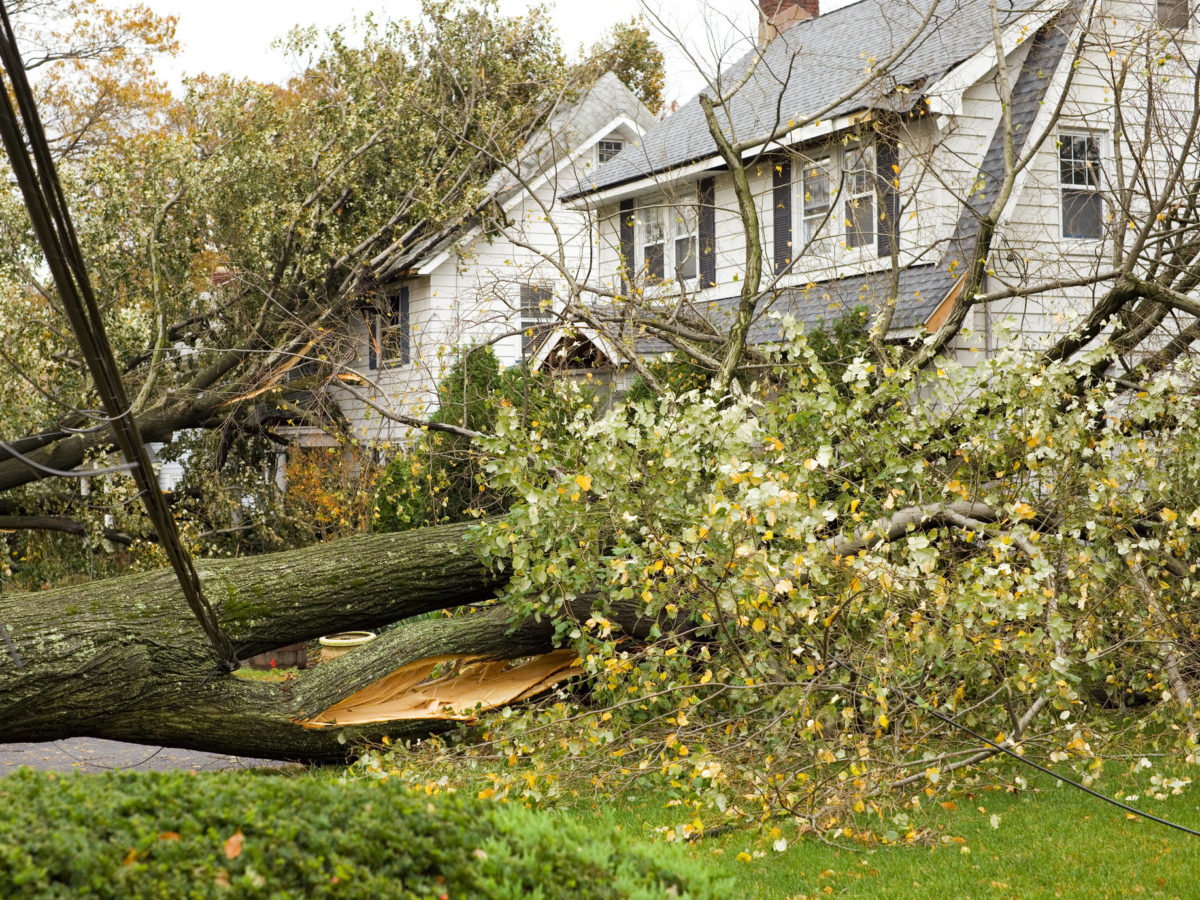
Social media and nontraditional data sets create transparency of when, why and where major grid events occur.
In the fall of 2018, with a new vision of grid resiliency —driven by industry collaboration and a necessity to provide heightened levels of customer and crew safety — PSE&G proactively reached out to the market with a goal to provide powerful new event detection and communication tools for emergency managers and utility operators. In the past, the utility had subscribed to event-based alerts from traditional news organization; however, the emergency response team recognized the untapped potential in using the unique solutions of an emerging group of vendors that challenged the traditional acquisition and deployment of data in utility operations. Covering a densely populated territory of millions, the emergency response team at Public Service Electric & Gas Co. has seen everything firsthand. In an emergency or even during general operations, nontraditional data like social media and community alerts can provide the event detection, situational awareness and intelligence a utility needs to plan and act quickly. Public Service Electric & Gas Co. (PSE&G) is one of the first utilities in the world to embrace third-party data sets. They enable the utility to increase safety, eliminate communication gaps, and determine the when and the why of events through real-time discovery.
Like many utilities, PSE&G has extensive supervisory control and data acquisition (SCADA) data to monitor its distribution system, and it relies on customers to call in outages or other problems with their service. Yet, the emergency response team knew this did not give a complete picture. Customers were using social media, municipal government agencies such as fire and police were notifying the public about emergencies, and regional reporters were on top of local news. Was that data worth capturing and using in PSE&G’s day-to-day emergency response activities?
Utility-Vendor Partnership
PSE&G, a utility that does not have advanced metering infrastructure (AMI), was looking for a way to obtain more focused outage information through social media. Experience shows key social media influencers and a growing number of people post outage-related information to social media before or instead of through traditional utility reporting methods. In addition to helping focus restoration efforts by more specifically locating damage and sources of outages, social media posts oftentimes include images that can help a utility to ascertain better the extent of damage to assets.
Seven years prior, Superstorm Sandy brought a surge of wind, water and a growing appreciation for how utility-vendor collaboration could drive change through meaningful relationships between the businesses that create technology to protect the grid and the operative teams that use these tools.
PSE&G knew a single solution would not achieve the entirety of its grid resiliency vision. Rather, an impactful transformation would require the integration of a variety of cross-industry tool platforms, nontraditional data sources, cloud power applications and a strategic focus on geospatial geographic information system (GIS) technologies. Post-Sandy, this collaborative effort was crucial to drive utility transformation and provide quantifiable metrics, potentially related to liability, safety, and technology investment. PSE&G also recognized the vendor community was mobilizing around data-driven solutions that included powerful interfacing capabilities, as an intelligent application must have portability into existing utility enterprise investments like GIS, an outage management system (OMS) and a customer information system (CIS).
A playbook of interoperability requirements was defined, and the PSE&G team identified three key rules for vendors:
- They must embrace spatial interoperability and have a proven track record of integrations with GIS solutions, particularly the advanced capabilities of platforms like Esri.
- They must have a documented developer application programming interface (API) that provides two-way real-time connectivity to data services, boosting communication and reliability.
- They must have a clear understanding of Agile-based product development, a process where value is defined by utility necessity and not vendor self-interest.
While these requirements may appear fundamental to any utility’s strategic plans, the team at PSE&G knew only a strict enforcement of the three rules would be key to delivering on its post-Sandy goals. Fortunately, these emerging vendors were small but nimble, more responsive to Agile-based practices that aligned with PSE&G’s interoperability playbook and, most importantly, able to showcase alignment with spatial interoperability of data applications.
New Data Sets
It is easy now to look back and see why Superstorm Sandy was such a turning point in electric T&D management, particularly regarding customer service and digital connectivity. Social media and nontraditional data sets create transparency and visibility of when, why and where major grid events occur. Communities and their associated stakeholders (police, fire, local government, state emergency response officials and more) sit on a wealth of data that can provide real-time situational awareness to utilities and other decisive industries.
Customers want to help resolve outages faster and providing meaningful content that supports a holistic view of damage in these events is mutually beneficial. Simply put, this community-centric approach to data sharing can get lights on faster.
To visualize when, where and why outages occur, PSE&G embraced nontraditional data and Agile-based development practices to consider the following:
- Could these newfound data sets be used for the management of T&D operations?
- Could data directly improve reliability metrics such as system average interruption duration index (SAIDI) and system average interruption frequency index (SAIFI)?
- Could the power of the cloud and aggregated spatial views of cross-industry data optimize disaster planning and response?
A Data-Driven Partner
Through its search, PSE&G identified a firm, founded in 2013 in the wake of Superstorm Sandy, that already was operating in remarkable alignment with the utility’s interoperability playbook and collaborative vision. The cofounders of DataCapable Inc. had experienced a dramatic power outage and subsequent storm damage during Sandy. With smartphones in hand, they wanted to update the local utility and receive reliable real-time updates in turn. Frustrated that no clear communication channel existed to have this two-way connectivity, their only solution was to share on social media. This created the seed for a company that could provide critical information ahead of traditional information systems.
The team at DataCapable developed a software solution using artificial intelligence (AI) to identify data sources relevant to PSE&G emergency response. With the help of AI and a set of keywords, DataCapable identifies incidents within the PSE&G territory. About 70% of the sources do not mention the utility by name but only describe the incident. The results are displayed geospatially to put the information in the context of the service territory.
With this information, PSE&G can start addressing an incident even before a customer calls to report it. Additionally, the data provides information on the number of customers affected, pictures of the incident and the location — all of this without one customer call to the utility. The types of incidents captured are not limited to power outages but also can include fire damage and downed wires. The system can be expanded to gas leaks, active shooter notifications, and major weather events.
PSE&G is now aware of outages and incidents that would not have been called in by a customer. Community alerts and local news spotters are providing valuable information. By identifying the right data sources, PSE&G can interact with local news organizations and municipal government agencies to encourage more detail and pictures of incidents. One picture of an event can help PSE&G to bring the right equipment to the site on the first visit. This improves response time and reduces the utility’s costs.
The Future
PSE&G recently held a spirited discussion at DistribuTECH 2019 to emphasize the need for data sharing across the utility industry. The power for data to transform communities, save lives and improve restoration speeds is very real. PSE&G now can see outages and more detailed reports of system damage before other systems (such as the OMS, GIS and advanced distribution management system) alert and further confirm the events. Surprisingly, it is not just by a few seconds; initial reports oftentimes can be minutes earlier, an approach to providing grid intelligence that is orders of magnitude faster than established traditional utility data sets.
The approach is simplistic yet so powerful. Through collaboration on technology, responsive Agile-based development and fully embracing the interoperability playbook, PSE&G and DataCapable have enacted a transformation in developing grid resiliency and event awareness in the following ways:
- PSE&G defines the types of incident notifications for which it is interested, such as outages, structure fires and asset damage.
- DataCapable applies patented AI algorithms that are rigorously trained in detecting how specific events are described in real-time.
- Areas of interest are defined, such as PSE&G only being notified of events that occur in areas of their operation, time frame, and interest.
- Data can be shared easily in real-time with existing PSE&G systems for enterprise-wide awareness.
By embracing the collaborative approach to technology, PSE&G and DataCapable have developed a library of how customers and associated community stakeholders describe events, specifically exploring the semantics of how grid damage is described by collecting and studying a lexicon of phrases and terminology. Unlike the other social media listening tools with which PSE&G was familiar, DataCapable was the only one that provided the output of their listening tool on a map. This visualization, in a thoroughly vetted and proven technological analysis, separates the DataCapable solution and produces the data in a highly functional visible screen that enables fast interpretation and consumption.
Through their partnership, PSE&G and DataCapable have significantly increased the potential menu of keywords and phrases to better attempt to identify outage-related issues.
Damage Awareness
As the growing value of these data sets emerged, the team at PSE&G has shifted its focus on how to more thoroughly integrate this information into existing processes, systems and emergency response workflows. It plans to analyze these insights with community officials as well as share and expand its nontraditional data sets. For example, how can community alerts, trained weather spotters, and even the telecommunication and cable industry provide valuable and mutually beneficial information? This is just the beginning of identifying and using available data. PSE&G is looking constantly for new sources to make its response even better.
PSE&G and DataCapable have proven data can be captured, analyzed and shared in real-time from unexpected non-traditional sources. Next, the utility will begin integrating these valuable insights into daily business processes for dispatching and expanding into other applications within the utility.
Acknowledgment
The authors wish to thank DataCapable for its ongoing support and role in the development of this article. The authors also wish to thank Esri for its role in spatial capabilities, which both the DataCapable platform and PSE&G emergency preparedness teams leverage.
Michael S. Weber (michael.weber@pseg.com) is the emergency preparedness manager for Public Service Electric & Gas Co. (PSE&G) in New Jersey. He is responsible for facilitating PSE&G’s emergency planning, training and exercise programs related to daily activities as well as large outage incidents. He also oversees business continuity planning for the electric and gas departments and has more than 30 years of experience in technical, environmental consulting and financial management.
Nancy Harris (nancy.harris@pseg.com) is the emergency preparedness compliance leader – electric for Public Service Electric & Gas Co. (PSE&G) in New Jersey, wherein she helps to facilitate training and exercises for general office storm-response personnel. Additionally, she assists with business continuity planning and is very involved in public outreach and basic safety training for first responders. Prior to joining PSE&G in 2016, Harris served as a logistics planner and later as the director of training and exercise for the regional catastrophic preparedness grant program (RCPGP) for New York, New Jersey, Connecticut, and Pennsylvania. The RCPGP developed plans and tools to assist 30 counties in better coordinating disaster response. Following that, she worked as a contractor for the Federal Emergency Management Agency Region III, assisting with the development of catastrophic disaster response plans and checklists.















